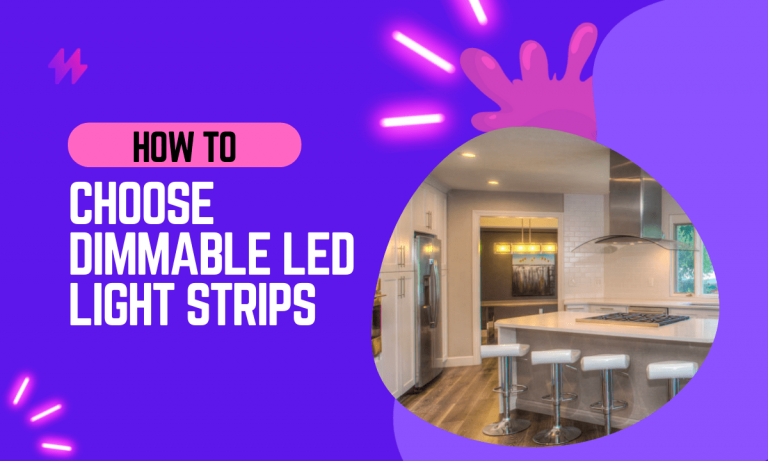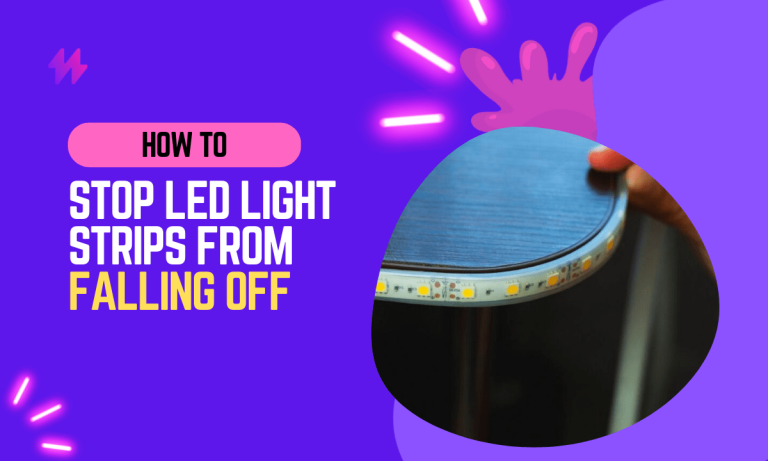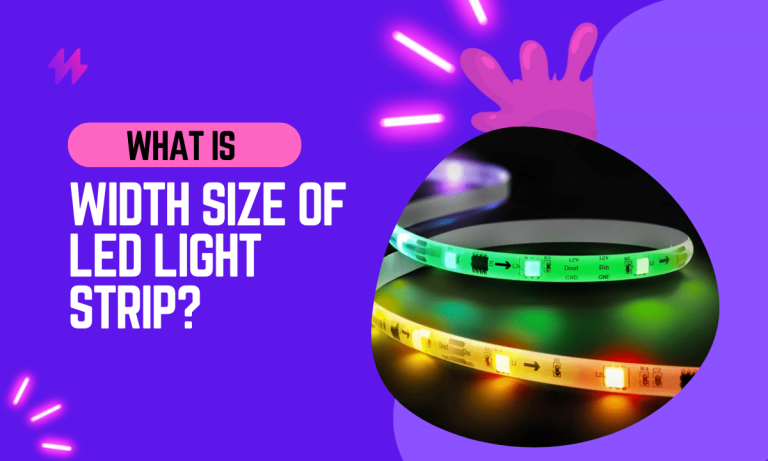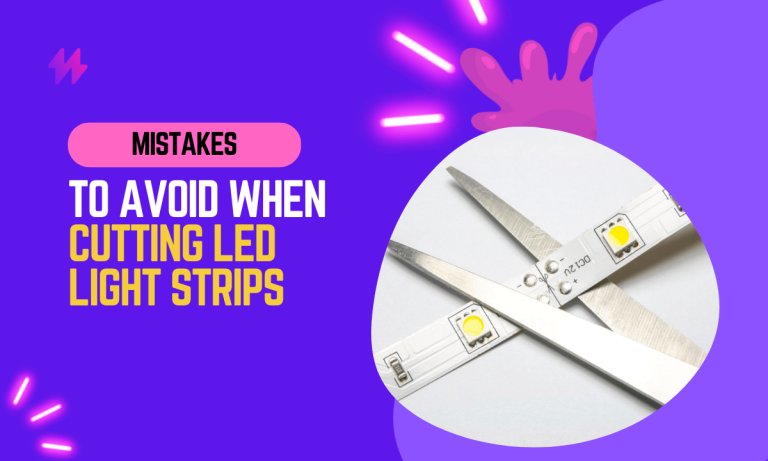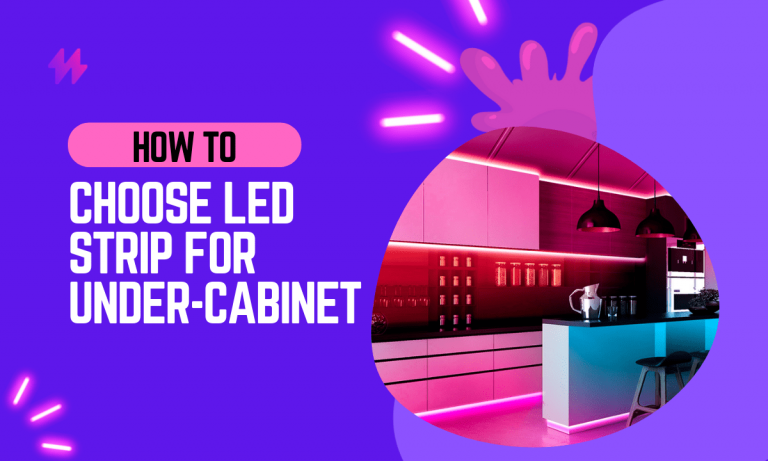Can You Put LED Strip Lights on Fabric? All You Need to Know
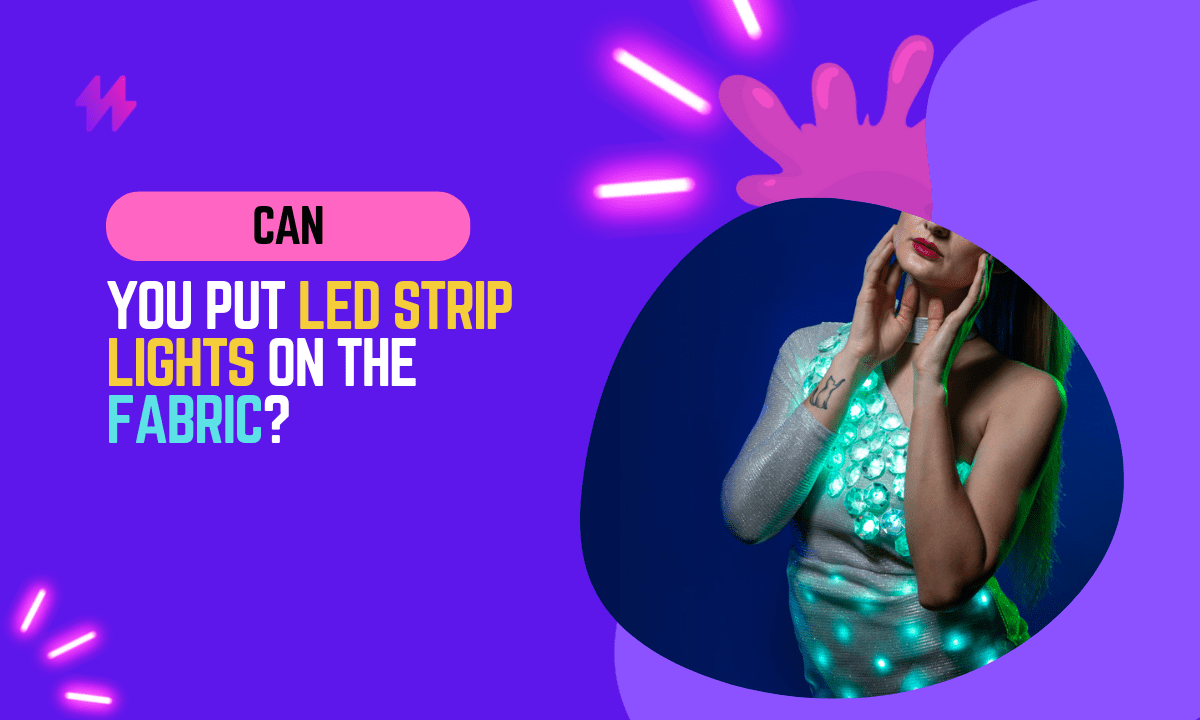
LED strip lights have become increasingly popular for their versatility and efficiency. These lights are not only used in home décor but have also made their way into the world of fashion and fabric design. However, integrating LED strip lights with fabric poses several challenges and questions.
This blog post aims to explore the feasibility, methods, and considerations of attaching LED strip lights to fabric, ensuring that your project shines both literally and figuratively.
Exploring LED Strip Lights: Fabric Compatibility and Attachment Methods
LED strip lights are flexible circuit boards populated with light-emitting diodes (LEDs) that can be cut to various lengths. They often come with an adhesive backing for easy installation. When it comes to fabric, the choice ranges from natural fibers like cotton and silk to synthetic materials like polyester and nylon.
Also read: Are LED Strip Lights Allowed in Dorms?
LED strip lights not only provide illumination but can also add an artistic touch to your fabric-based creations. By selecting non-fraying fabrics and ensuring the use of fabric glue or tape, you can safely attach LED strip lights without worry, creating illuminated designs that invite warmth and coziness to your space.
Can You Attach LED Strip Lights to Fabric? Understanding Compatibility & Methods
Yes, you can put LED strip lights on fabric, but it requires careful planning and execution. The main challenges involve securing the lights in place, maintaining the fabric’s flexibility, and ensuring safety, especially if the fabric is part of clothing or wearable technology.
When incorporating light strips into your designs, it’s essential to consider the type of fabric you’re using. Not only can illuminated attire enhance your creations, but ensuring your fabric is heat-resistant can prevent potential hazards while showcasing a luminous touch in your projects.
Exploring Methods: Can You Put LED Strip Lights on Fabric?
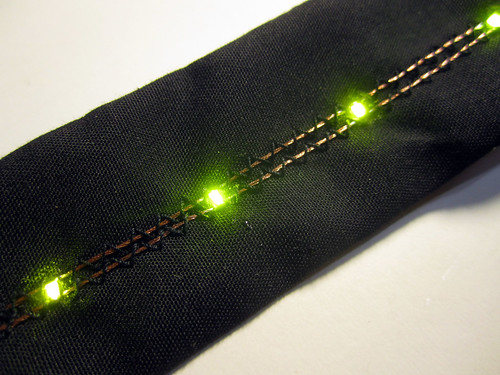
- Sewing: For fabrics that can withstand sewing, you can create small loops or channels to house the LED strips. Use a strong thread that can hold the weight of the lights.
- Fabric Glue or Adhesive: Special fabric adhesives can be used to attach the lights to the fabric. Ensure that the adhesive is strong enough to hold the lights but won’t damage the fabric.
- Velcro Strips: Using Velcro is a versatile method, allowing you to remove or reposition the lights as needed.
- Magnetic Fasteners: For heavier fabrics, magnetic fasteners can provide a strong hold and easy removal.
Key Considerations for Attaching LED Strip Lights to Fabric
- Weight: LED strips add weight to the fabric, so consider the strength and drape of the material.
- Heat: Ensure that the fabric can withstand the heat generated by the LEDs.
- Washability: If the fabric needs to be washed, think about how to protect or remove the LED strips.
- Power Source: Plan how to connect the LED strips to a power source, especially for wearable designs.
- Flexibility: The fabric should maintain its flexibility and comfort after attaching the lights.
Also read: How to Use UV Strip Lights & What They Are?
In addition to their aesthetic appeal, LED strip lights can be used safely on a variety of materials when proper precautions are taken. Choosing heat-resistant fabric and fabric-friendly labels ensures that your illuminated space remains both inviting and cozy without any risk of damage to the cloth.
Safety Tips for Attaching LED Strip Lights to Fabric: What You Need to Know
- Use low-voltage LED strips (12V or less) for added safety, especially in wearable applications.
- Ensure all wiring is insulated and secured to prevent electrical hazards.
- Avoid placing LED strips in areas where they might get wet.
Innovative Ways to Integrate LED Strip Lights on Fabric: Creative Applications
- Fashion: Incorporate LED strips into costumes or avant-garde fashion pieces.
- Home Décor: Enhance curtains, cushions, or furniture with LED lights.
- Events: Create dynamic backdrops or tablecloths for events with integrated lighting.
FAQs: Can You Attach LED Strip Lights to Fabric?
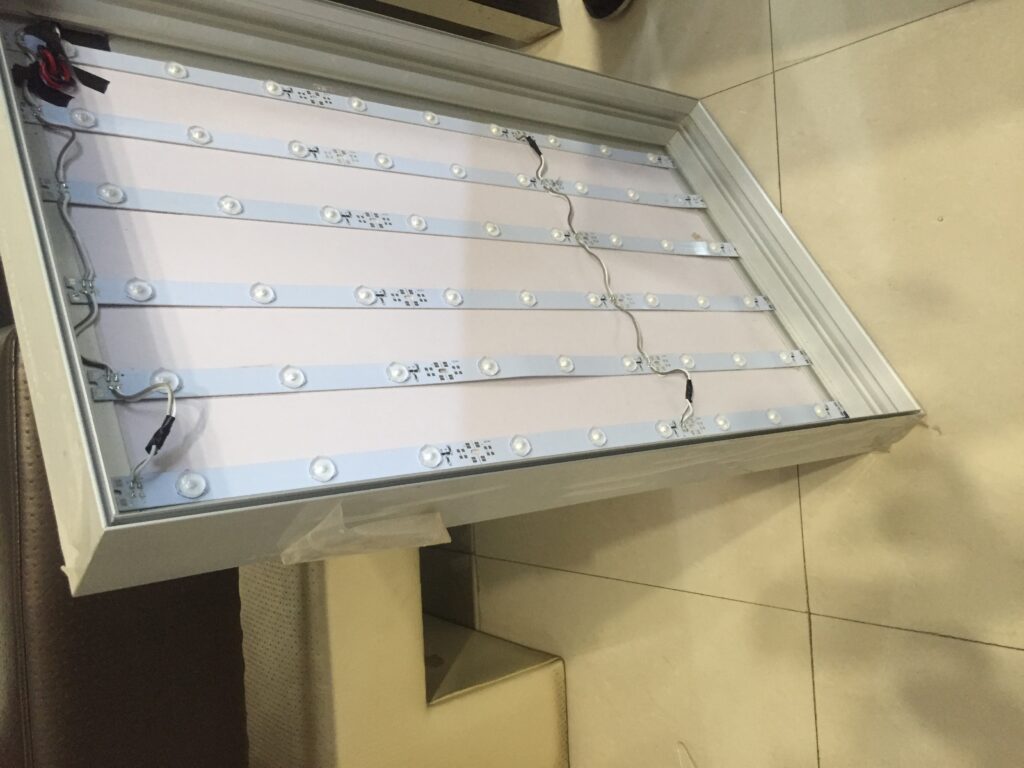
Q: Will the LED strip lights damage the fabric?
A: Generally, LED strip lights do not damage the fabric if attached properly. However, it’s important to consider the heat emitted by the LEDs and the strength of the adhesive used.
Q: Can I wash the fabric with the LED lights attached?
A: Washing is tricky and depends on the attachment method. If possible, design the garment or fabric item with removable LED strips for easy washing.
Q: Are battery-powered LED strips suitable for fabric?
A: Yes, battery-powered LED strips are ideal for fabrics, especially in wearable applications, due to their portability and ease of use.
Q: How long do LED strip lights last when attached to fabric?
A: LED strip lights generally have a long lifespan (up to 50,000 hours). However, the wear and tear of the fabric can affect their longevity.
Q: Can I cut the LED strip lights to fit the fabric?
A: Yes, LED strip lights can be cut at designated points, usually marked with a line or scissor icon.
Also read: Can You Use LED Strips to Grow Plants?
When considering the use of **light-emitting diode LEDs** in your designs, always ensure that the **fabric involves** materials that are non-flammable and capable of withstanding the heat generated. By carefully selecting **different fabrics** and employing techniques such as **cloth tape** to secure your **light strips**, you can create a beautiful ambiance that ensures safety and a **soft glow** throughout your living space.
Final Thoughts on LED Strip Lights and Fabric Compatibility
In conclusion, incorporating LED strip lights into fabric presents a unique opportunity for both designers and DIY enthusiasts to explore innovative lighting solutions that are both flexible and creative. However, it is crucial to approach this integration with a thorough understanding of the technical requirements and safety precautions involved. LED strips, while versatile, require careful handling to ensure that they do not overheat or short-circuit, especially when embedded in materials that may not inherently support electronic components. Effective heat management, achieved through proper spacing, secure attachment, and the selection of appropriate fabric types, is essential to maintain the longevity and functionality of the lights. Furthermore, it’s important to consider the power source, whether it be batteries or a direct electrical connection, as it must be safely encased and ideally removable to facilitate washing and maintenance of the fabric.
Moreover, the aesthetic implications of using LED strip lights on fabric should not be underestimated. This technique allows for dynamic designs that can change and evolve, offering a customizable element that is particularly appealing in the context of modern wearables and home decor. When executed thoughtfully, the integration of light elements into fabric can transform ordinary objects into interactive, visually engaging pieces. Whether in the context of safety gear that lights up in low visibility conditions or in an artistic installation that plays with light and shadow, the potential applications are as broad as they are inspiring. As this technology continues to evolve, it will undoubtedly offer even more sophisticated ways to blend textiles and lighting, opening new avenues for creative expression and functional design. Thus, while the technical challenges are non-trivial, the creative rewards make exploring this intersection between technology and textile well worth the effort.
Can You Put LED Strip Lights On Fabric? | Understanding the Basics of LED Strip Lights on Fabric
Understanding the use of LED strip lights on fabric introduces a world of possibilities for decorating and illuminating various textile surfaces. Can you put LED strip lights on fabric? The answer generally leans toward yes, as fabric LED lights are safe for clothes, provided certain precautions are taken. Many fabrics can effectively support these versatile lights, such as drapes or cushions, allowing for a luminous flair that enhances the ambiance of any space. These light strips, akin to LED Christmas lights, provide a bright and festive atmosphere, but it’s essential to consider how the fabric alters the light’s properties. Lights generate heat, so careful attachment of LEDs, whether through adhesive options or stitching techniques, ensures safety and prevents damage. Key factors, such as using non-conductive and non-flammable materials, must be observed to prevent hazards. Ultimately, employing the right methods for attaching LEDs to fabric can turn ordinary textiles into captivating decorations that unveil a warm glow in darker settings.
Can You Put LED Strip Lights on Fabric? | Types of LED Strip Lights Suitable for Fabric
LED strip lights designed specifically for fabric applications come in various types that cater to different needs. Flexible light strips, often referred to as lightstrips, can easily conform to the contours of a fabric surface, making them ideal for crafting and fashion projects. Battery-operated lights offer a convenient solution for those who want to avoid the hassle of wires. Fabric LED lights are generally safe for clothes, providing an ambient glow without the risk of heat damage. Their design ensures that they blend seamlessly with the main fabric while enhancing the visual appeal of any project.
Choosing the right type of LED strip lights is crucial for effectiveness and safety. Light bulbs that are part of e-textile circuits, such as those from ©Kitronik Ltd, provide energy-efficient options. These options usually involve non-conductive materials that help prevent electrical issues. The appeal of using LED lights lies in their ability to illuminate spaces softly and create enchanting effects. Opting for lightweight models ensures that the fabric remains comfortable to wear without the unwanted burden of heavy LED pokes. Exploring different kinds of lightstrips will help in achieving the desired aesthetic while ensuring practical application.
The Importance of Fabric Selection for LED Strip Lights
Choosing the right fabric is crucial for successfully integrating LED strip lights into your projects. The question of “Can You Put LED Strip Lights on Fabric?” often arises, and the answer depends significantly on the type of material selected. Flexible fabrics that can support the weight of the LEDs while allowing for movement yield the best results. Fabrics such as cotton or polyester are ideal as they can easily accommodate the lightweight design of the strips, allowing the light to unveil creative possibilities rather than simply illuminating spaces that might otherwise feel dark.
The method of attaching LEDs also influences fabric selection. Certain fabrics may require specific adhesives or stitching techniques to ensure durability and longevity when attaching LEDs. Using an e-textile circuit, like those offered by kitronik ltd, allows for seamless integration of LED technology into your fabric. Ultimately, the combination of fabric choice and attachment methods can transform an ordinary garment into a stunning light-enhanced piece, making it essential to consider these factors carefully.
Methods for Attaching LED Strip Lights to Fabric
Attaching LED strip lights to fabric can be a creative way to enhance your décor. The process does raise the question, Can You Put LED Strip Lights on Fabric? The answer lies in the methods chosen for securing the LEDs effectively. Various options are available for attaching LEDs, including adhesive backing or sewing techniques. These methods ensure that the lights remain in place while allowing the fabric to maintain its flexibility. Choosing the right approach is crucial as it not only facilitates the illumination of darker spaces but also preserves the integrity of the fabric. E-textile circuits open up exciting possibilities for integrating light into everyday textiles, thereby transforming ordinary items into captivating features. With the right techniques for led.attaching, you can light unveils a whole new world of creativity.
Adhesive Options for Securing LED Strip Lights
Adhesives play a crucial role in the process of attaching LED strip lights to fabric. Various adhesive options are available, each offering unique benefits depending on the type of fabric and the intended use. Strong double-sided tape specifically designed for e-textile circuits is a popular choice. This tape can securely hold the lights while ensuring that the fabric can still breathe and move, making it ideal for applications where fabric will illuminate spaces, even those in dark ones.
Another option includes fabric-safe glue, which provides a more permanent bond. This method is particularly useful for projects that require long-lasting durability. It is essential to verify that the adhesive is compatible with both the LED strip lights and the fabric material to prevent any unwanted damage. Exploring the question, “Can You Put LED Strip Lights on Fabric?” leads to an understanding of the various techniques used in attaching LEDs, ensuring both aesthetic appeal and functional performance.
Stitching Techniques to Hold LED Strip Lights
Using stitching as a method for attaching LED strip lights to fabric provides a secure and durable option for illumination projects. This technique allows for the integration of the light strips into various fabric types, ensuring a seamless finish while illuminating spaces creatively. Can you put LED strip lights on fabric? Yes, by employing e-textile circuit.©kitronik ltd, stitching can effectively hold the LEDs in place without the risk of damaging the electronics.
Careful planning is crucial when implementing stitch techniques. Selecting the right thread type and sewing pattern not only enhances the aesthetic appeal but also ensures longevity for the fabric illuminated by the LED lights. The process of attaching LEDs through stitching can provide a more professional finish compared to adhesives, making it an ideal choice for custom fabric projects. This method emphasizes the versatility of integrating technology with textiles, showcasing how fabric can become a functional element in design.
Key Considerations for Using LED Strip Lights on Fabric
Using LED strip lights on fabric requires careful consideration of weight and flexibility. The ability of the fabric to support the added weight of the lights plays a significant role in determining if the project will be successful. Can You Put LED Strip Lights on Fabric? is an important question to ask, as some materials can sag or become misshaped under the strain of the lights. Choosing lightweight options in the led.attaching leds category can help ensure that the fabric remains functional and visually appealing. As fabric illuminate spaces beautifully, it is crucial to assess how the installation may impact the integrity of the material over time. Can You Put LED Strip Lights on Fabric? requires a thoughtful approach to balance aesthetics and practicality.
Weight and Flexibility of LED Strip Lights
The weight of LED strip lights plays a crucial role when considering whether you can put LED strip lights on fabric. Lightweight strip lights are more suitable for fabric applications, as they won’t add unnecessary bulk or strain to delicate materials. Heavier strips might cause the fabric to sag or lose its shape, compromising the overall aesthetic and functionality of the fabric piece. Therefore, choosing the right weighted LED strip lights is essential for successful integration.
Flexibility is another important factor in determining if you can put LED strip lights on fabric. Flexible LED strips can easily conform to the contours and movement of the fabric, ensuring a seamless appearance. Rigid strips may not adhere well to uneven surfaces, resulting in unsightly gaps or potential damage. Selecting flexible LED strip lights enhances the compatibility with various fabrics and ensures a more visually appealing outcome.
Potential Damage to Fabric from LED Strip Lights
The question of whether you can put LED strip lights on fabric raises concerns about potential damage to the material. High temperatures generated by some LED strip lights can risk scorching or melting delicate fabrics. For this reason, selecting appropriate LED strip lights is crucial. Opting for low-heat variants can mitigate damage and preserve the integrity of the fabric.
While mounting LED strip lights, it is essential to consider the adhesive or stitching methods used. Certain adhesives can leave residue or compromise the fabric’s texture. Over time, improper attachment may lead to wear and tear, affecting both appearance and functionality. A careful approach ensures that the answer to “Can you put LED strip lights on fabric?” aligns with the preservation of your fabric choices.
Safety Measures When Using LED Strip Lights on Fabric
Using LED strip lights on fabric requires careful attention to safety measures. Understanding how to manage heat is crucial, as excessive warmth can damage the fabric or pose a fire risk. Users should ensure that the LED lights chosen emit minimal heat, which aligns with the question, “Can You Put LED Strip Lights on Fabric?” Proper ventilation around the lights helps mitigate heat buildup. Electrical safety is equally important; avoiding overloading circuits and ensuring proper insulation can prevent short circuits. Taking these precautions not only enhances the longevity of both the fabric and the LED lights but also ensures a safe and enjoyable experience.
Heat Management and Its Impact on Fabric
LED strip lights can generate heat, which poses a potential risk when considering the question, “Can You Put LED Strip Lights on Fabric?” Fabric materials can be sensitive to temperature changes. Excessive heat from LED strips can lead to discoloration, melting, or even burning of the fabric, making selection and placement critical. Proper attention to heat management will ensure that the integrity of the fabric remains intact.
Understanding heat management is essential for any project involving LED strips and fabric. By ensuring adequate ventilation and choosing LED strips designed to minimize heat output, you can reduce the risks associated with high temperatures. You can safely answer the question, “Can You Put LED Strip Lights on Fabric?” with proper precautions and suitable materials that withstand any heat generated during usage.
Electrical Safety and Preventing Short Circuits
Ensuring electrical safety is crucial when considering, “Can You Put LED Strip Lights on Fabric?” LED strip lights designed for fabric applications typically operate on low voltage, reducing the risk of electrical hazards. However, improper installation or using non-compatible lights can lead to short circuits. It’s essential to choose lights that specifically mention their suitability for fabric to mitigate these risks effectively.
Preventing short circuits also involves careful management of wiring and connections. Loose or frayed wires can expose conductive materials, which creates fire hazards. Properly securing connections and avoiding tight bends in the wiring help maintain the integrity of the system. Always double-check that the power supply matches the strip lights’ requirements before installation to ensure safety and performance.


